Traditional shadow puppetry with a modern twist revives dying interest in Malaysia
The future of Wayang Kulit Kelantan is uncertain, especially when the state government has imposed a ban.
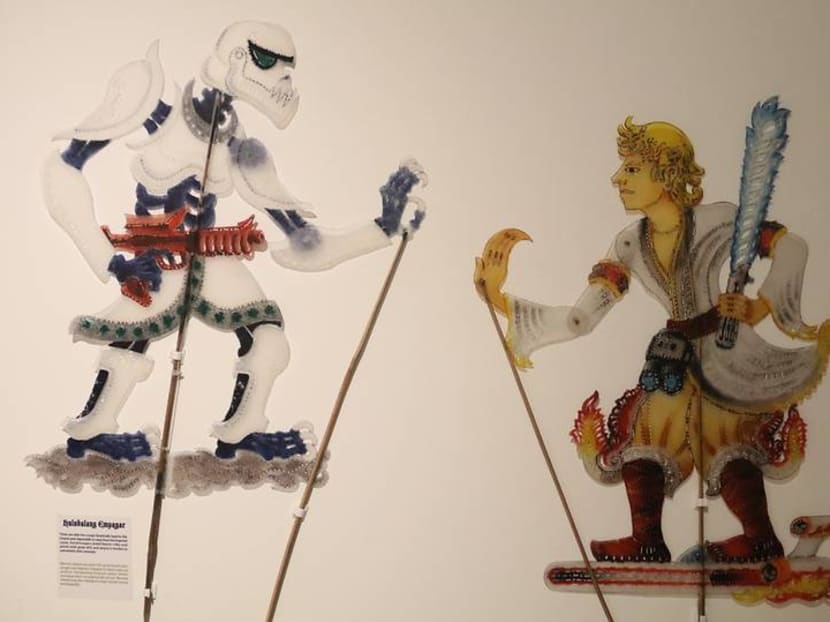
Perantau Langit (right, Luke Skywalker) and Hulubalang Empayar (Stormtroopers) get a wayang kulit makeover. (Photo: Tho Xin Yi)
KUALA LUMPUR: Princess Leia bends down and slips a disk containing the plans for the Death Star battle station into R2-D2.
And next comes C-3PO, bursting onto the scene looking for the astromech droid. Startled, Princess Leia leaves in a hurry.
This classic Star Wars scene was reenacted recently at a shopping mall in Kuala Lumpur, except that the characters were portrayed in traditional wayang kulit (shadow puppetry) style and were conversing in Malay.
Their names were also given a localised twist - Princess Leia was known as Puteri Leia, R2-D2 as Ah Tuh, and C-3PO, Si P Long.
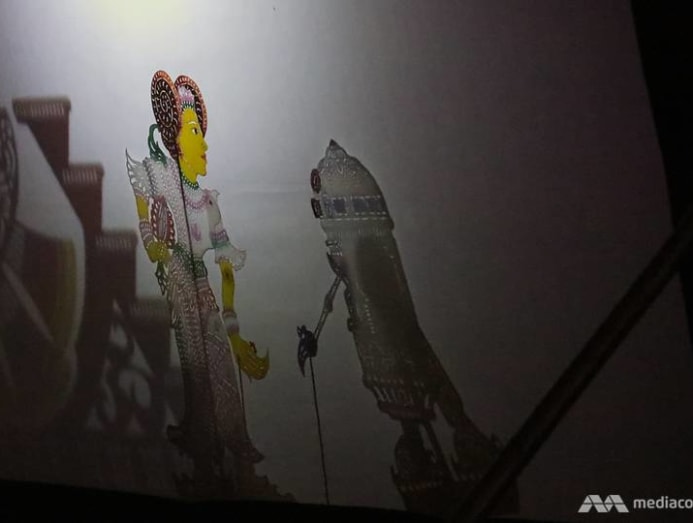
Presented by Fusion Wayang Kulit, the Star Wars-inspired performance is a modern take on Wayang Kulit Kelantan, a form of traditional art that has lost its appeal over the years, no thanks to changing times and a ban imposed by the state government.
During the recent performance, the audience watched in delight as the silhouettes of the lead characters Perantau Langit (the Sky Voyager, referring to Luke Skywalker) and Sangkala Vedeh (the Powerful General Vedeh, Darth Vader) battled on the translucent white screen.
At the other side of the screen, accredited dalang (master puppeteer) Mr Muhammad Dain Othman was solely in-charge of breathing life into these colourful, two-dimensional puppets.
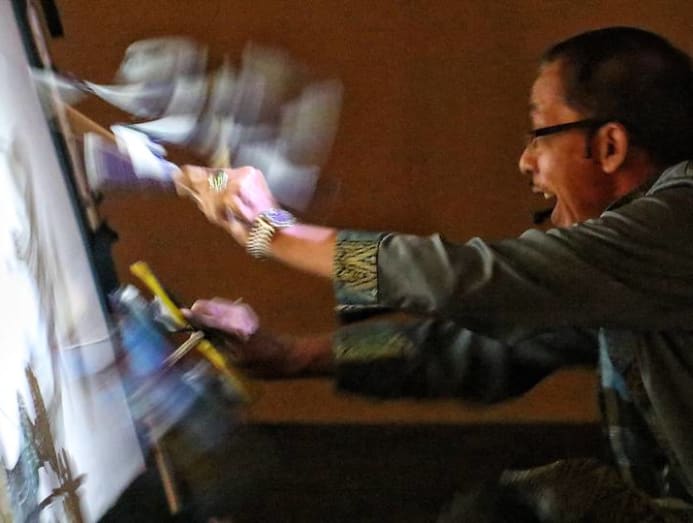
He orchestrated the characters’ movements across the screen while narrating the story. A puppet made its entrance, another exited, their shadows grew larger as they moved further from the screen, casting a theatrical feel to the performance.
Behind Mr Muhammad Dain, a musical ensemble took cues from him to weave rhythmic tunes to accompany the show.
A WINNING FORMULA
Fusion Wayang Kulit, a brainchild of Mr Tintoy Chuo and Mr Teh Take Huat, has carved a name for itself with its wayang kulit depictions of pop culture icons.
Besides Star Wars characters, Marvel and DC superheroes were also given a wayang kulit makeover, often eliciting oohs and aahs from fans and non-fans alike.
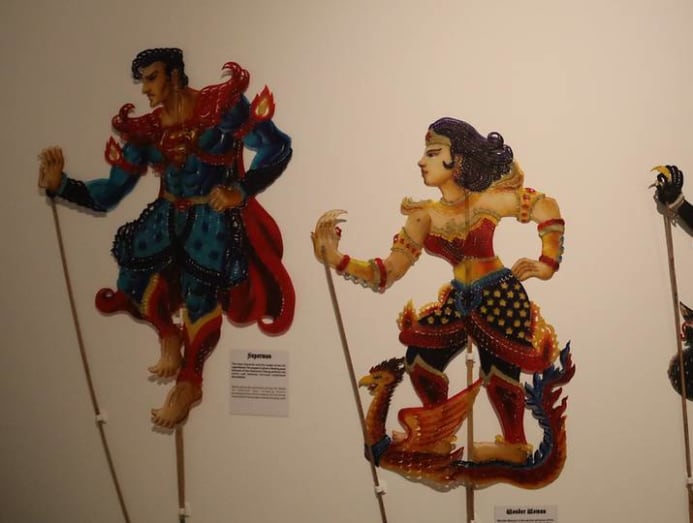
It all began with a lightbulb moment when Mr Chuo was looking for a unique idea for an art exhibition in 2012.
A character designer by profession, the 46-year-old thought of creating wayang kulit characters enhanced by futuristic elements.
“I am a big fan of Star Wars, so I wanted to combine Star Wars and wayang kulit. That’s how everything started,” he said.
Traditionally, the storyline of Wayang Kulit Kelantan centres on the triumph of good over evil in the Seri Rama tales based on the Hindu epic. It recounts the journey of Seri Rama to rescue his wife Sita Dewi, who was captured by the evil Maharaja Rawana.
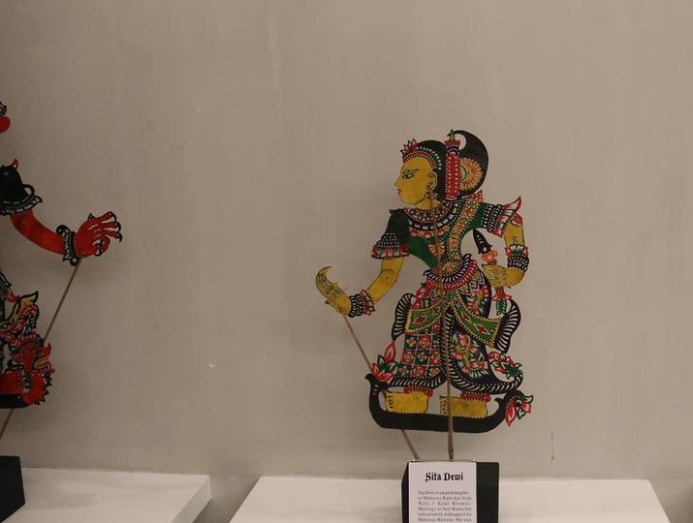
Star Wars also has a classic good versus evil theme, Mr Chuo said, drawing a parallel between both.
With zero experience in making traditional wayang kulit puppets, he laser-cut his Star Wars-inspired characters out of art board for the exhibition. Little did he know that a much bigger project would ensue.
By chance, Mr Muhammad Dain caught wind of Mr Chuo’s search for a master puppeteer and reached out to him on Facebook. The two met up at Mr Muhammad Dain’s workshop in Kelantan, and it turned into a crash course of sorts for both.
“I learned about the process of making a wayang kulit character, and he was introduced to all these sci-fi characters. He was very open-minded. It was a good experience for us,” said Mr Chuo.
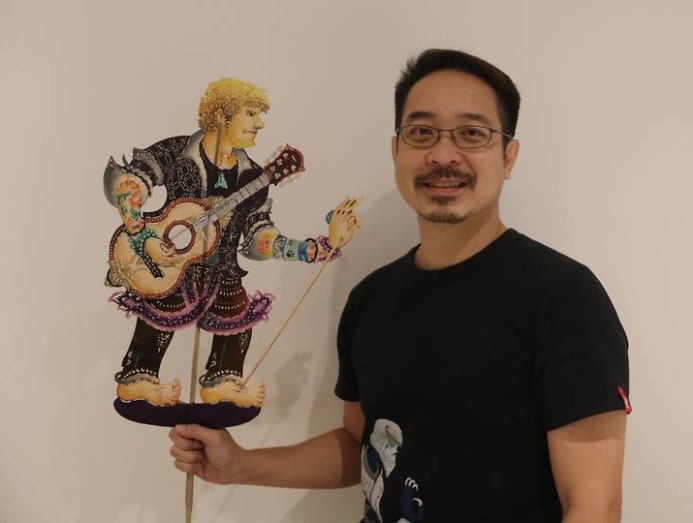
In this partnership, Mr Chuo designs new characters and plans the storyline, while Mr Muhammad Dain focuses on puppet making and performance.
“He is an expert in the history, format and characteristics of wayang kulit. I want to make sure what we do is correct, because when we talk about introducing Star Wars, there are many modern elements such as laser guns. How should we get it right?”
When designing the puppets, Mr Chuo makes sure they adopt the posture of the traditional puppets. Each is embellished with traditional elements.
A wayang kulit figure usually has one moveable arm for the master puppeteer to manoeuvre during performances. The other arm holds a tool associated with the character, such as a lightsaber for the jedi.
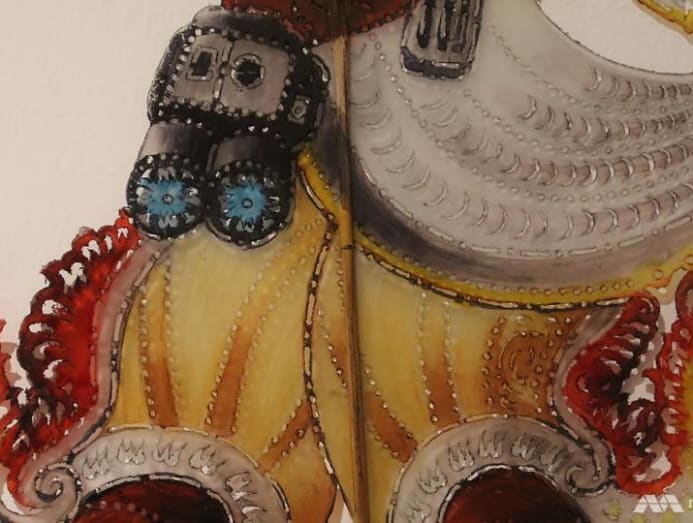
“I imagine Perantau Langit (Luke Skywalker) to be a person who walks in the sky, so I add feather - a Seri Rama feature - to his legs,” he explained.
Once Mr Muhammad Dain approves the design, his puppet crafters will then cut the character out of cowhide (or plastic for certain characters) and chisel motifs onto the puppet with hammer.
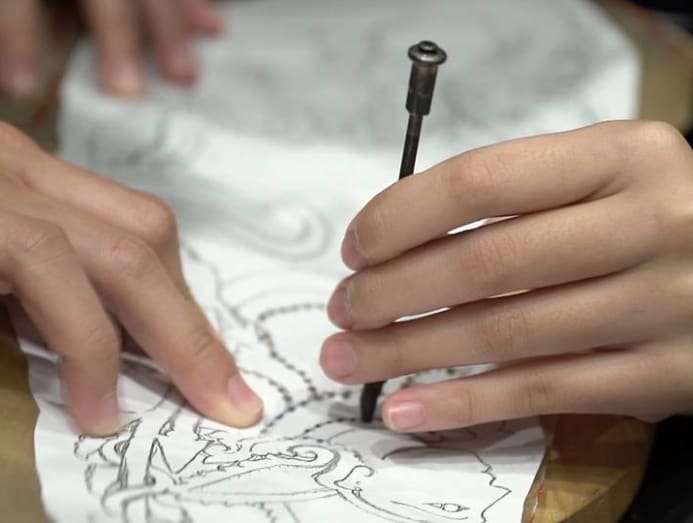
On stage, computer-generated special effects are introduced to enrich audience experience.
In the Star Wars-inspired wayang kulit show, Sangkala Vedeh has a hoarse, menacing voice, while a fiery sky hangs over the characters in dark scenes to evoke a spine-chilling mood.

Mr Chuo believes Fusion Wayang Kulit has found a winning formula to make wayang kulit appealing for the public, especially the younger generation.
“I think the formula works, because people cannot relate to the traditional wayang kulit - it is beautiful, don’t get me wrong - but when you have characters like ours, which the young people recognise, it is easier for them to accept,” he said.
Nonetheless, despite it being known for its modern characters, a prominent space of its newly-opened gallery in Kuala Lumpur is dedicated to the figures in the Seri Rama repertoire.
Visitors are first walked through the traditional characters, before they are introduced to those created by Fusion Wayang Kulit.
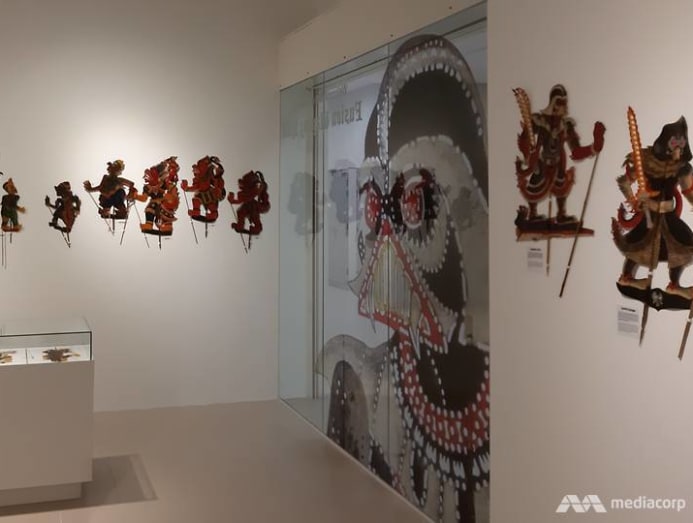
STATE BAN HITS WAYANG KULIT POPULARITY
Wayang Kulit Kelantan has its roots in the eastern state in Peninsular Malaysia. Yet ironically, it was banned by the Parti Islam Se-Malaysia-led state government in 1998 along with other forms of traditional art including the Mak Yong dance for containing elements deemed “un-Islamic”.
Under the ban, wayang kulit can only be staged openly once a week at the cultural centre, Mr Muhammad Dain said. The effect of the ban was detrimental.
“We used to have 50 wayang kulit troupes in Kelantan, but the total declined to just 12 today.”
Mr Muhammad Dain, 67, began learning the art form in 1980 from three masters.
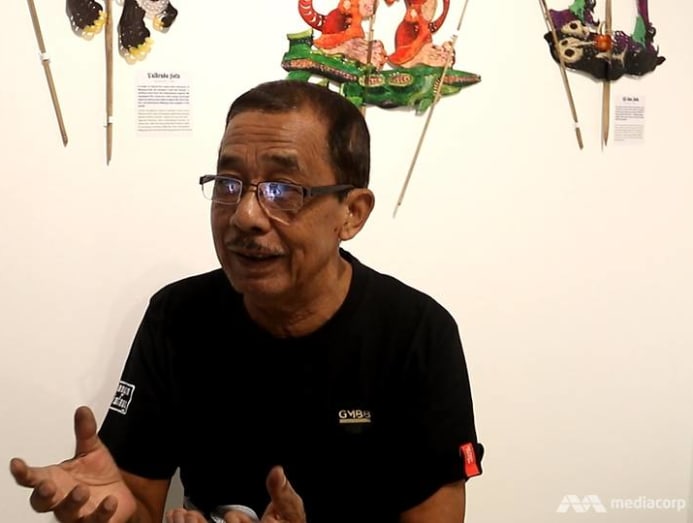
He said it was a natural path to take because wayang kulit was flourishing back then. He performed wayang kulit on the side, while holding a day job as a government officer.
The subsequent state-imposed ban, coupled with the fact that people were getting more educated and technology was becoming increasingly advanced, led many to see wayang kulit as outdated and irrelevant.
“As a master puppeteer, this phenomenon saddens me, not because of (its effect on) puppeteers, but the art,” Mr Muhammad Dain said.
A United Nations special rapporteur in the field of cultural rights had in March said it is a shame that these arts are banned in the state where they were actually born. Malaysians, especially the Kelantanese, would lose a part of their culture if the art forms were left to die, Ms Karima Bennoune said.
Universiti Sains Malaysia’s (USM) Associate Professor Dr AS Hardy Shafii described the ban as a blow to one of the genius works in the field of performing arts and literature.
“It is like destroying your own heritage without understanding the concept and philosophy of life and the importance of aesthetics in our lives.
“In truth, fear, ignorance and insecurity may see the demise of other forms of art as well,” the director of USM’s Dewan Budaya (Cultural Centre) told CNA.
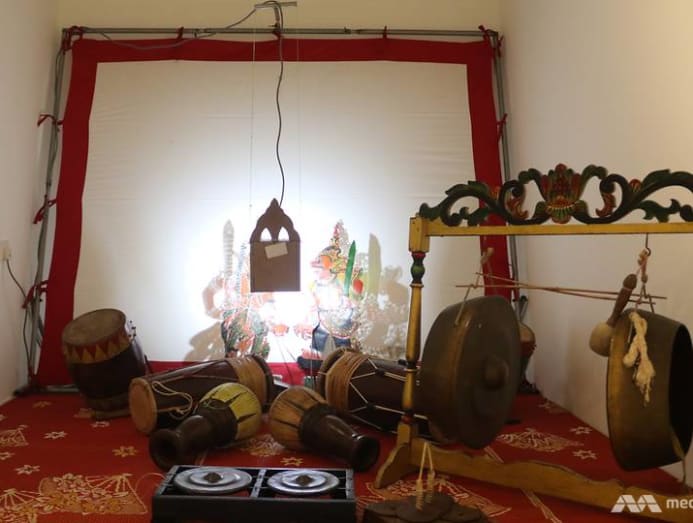
On Wednesday (Sep 25), Kelantan Deputy Chief Minister Mohd Amar Nik Abdullah said the state guidelines should not be viewed as a hindrance to art performances.
He said artists should be creative, instead of seeing the rules as something that limit their involvement in the art forms, Sinar Harian reported.
Mr Mohd Amar said the Mak Yong dance and wayang kulit are permitted as long as elements that run against Islam are eliminated.
REVIVING THE ART
If Malaysia wants to revive this old form of storytelling, the government and relevant agencies have to give some thought to marketing the art, Mr Muhammad Dain said.
“Right now, wayang kulit puppeteers and musicians cannot rely solely on the art for livelihood, there isn’t a market for wayang kulit.”
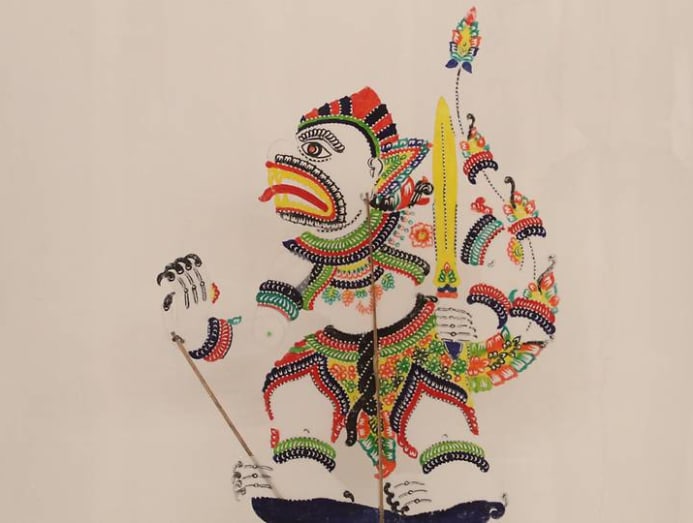
The Education Ministry and the Tourism Ministry, in particular, can work together to teach the younger generation about Malaysia’s own culture and heritage, USM’s Assoc Prof Hardy said.
“Our education system should emphasise on the importance of culture from pre-school onwards. Concentrate on good moral values and ethics.
"Nurture our younger generation on why we should value our own heritage, with folk songs, dance and local stories embedded into our curriculum,” he said.
For wayang kulit, an emphasis should also be put on the traditional characters in the original repertoire, the academician opined. “The characters are unique, interesting and contemporary enough to be highlighted. By redesigning it, the image on the screen should be spectacular and colourful.”
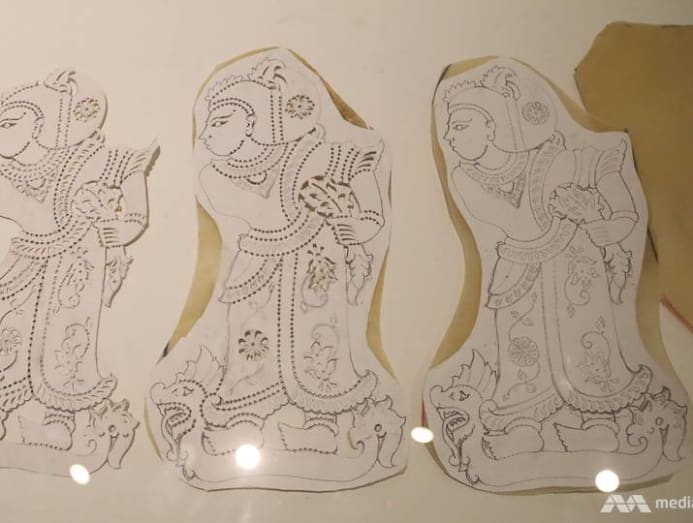
As for Mr Muhammad Dain, the original Seri Rama tales are still close to his heart.
The moral and life lessons they convey are essential elements of wayang kulit, he said.
“But perhaps we can first attract the younger generation to appreciate wayang kulit, and then later, add these values to stories that are suitable to our society.”





